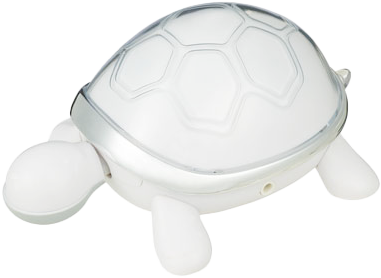#birding resources
Explore tagged Tumblr posts
Note
I really want to get into birding, but I have no idea where to start! Do you have any advice for a total beginner?
Oh boy do I have advice!
-Familiarize yourself with the birds local to your area. It's as simple as Googling "[insert state, province, etc] birds". Look for websites that have photos to accompany the information, ideally photos of the birds in different stages of development and different sexes if there's sexual dimorphism/dichromatism. Good websites are:
*Ebird. Not only does this website have information about local birds, but you can also upload your sightings and help build a global database of birds.
*All About Birds. Both this website and Ebird are associated with The Cornell Lab of Ornithology, which does amazing work.
*Wikipedia. Forget everything your high school teacher said about Wikipedia, if you want an easy and accessible list of birds in your region, Wikipedia is great.
-Download Merlin. I can't recommend this app enough. It's not very good at photo ID, but using it's sound ID as you're on the trail will help you become familiar with different bird calls and how to recognize them. The best part is that your findings on the app automatically link to Ebird.
-Start with a cheap pair of binoculars. I don't actually have a fancy pair of binoculars, just a $20is pair that I keep in my bag at all times, and sometimes I borrow my brother's more expensive binos for long trips. I'm saving up for a high-quality pair, but they're not necessary, and I've come this far without them.
-Look to see if there's any local birding groups in your area. Try typing in your city or region and "birding" and see what shows up. Birding with other people is a great way to pick up on identification skills. Also group birding events will also have nice pairs of binoculars that you can borrow.
-Try to train yourself to become more observant of your surroundings. You'll be surprised by how many different bird species you'll see just in regular day of work and errands. My base is in the city, and people are always surprised when I tell them just how many species of birds I see just on my way between places, because most people don't pay attention to the birds around them.
-If you get a good photo of a bird or spotted a bird you're proud of seeing, share it! Not only will it make you feel happy to get the positive validation, but it's also helping other birders to know what's in their area. You can upload your findings to iNaturalist, or just post them on the birding subreddit.
-Don't get too caught up in the competition. Some (very few) birders become really competitive if they're going for a Big Year, but really, in my opinion that sucks the fun out of nature. There's nothing wrong with setting a goal for yourself, for example, my goal for this year was spotting 100 species, and I've surpassed that at 151 and counting, but it's not a competition, just a personal goal.
-If you're going out into the field, make sure you're dressed appropriately for the terrain and weather. If you have seasonal allergies, make sure you pack allergy meds, because there's nothing worse than erupting into a fit of coughs and sneezes and scaring all the birds away.
-Do not touch the birds. Birding is about observing birds, not catching or touching them.
Good luck!!!
47 notes
·
View notes
Text
hello it is i, your local bird nerd, and i wanted to share with you guys an invaluable resource for anyone with an interest in birding in North America, whether you're new to the field or a seasoned pro! this isn't a plug btw - as my followers know, i'm here to promote free resources for education. and the resource i want to tell you guys about is Thayer Birding software!
the company that created Thayer Birding software shut down fairly recently (in 2021) and the man behind the magic, Pete Thayer, wanted to continue to make his software available to those with a passion for birding. you can download the program for free on the new Thayer Birding software website:
this software is awesome because it has fantastic quizzes with a wide range of categories and even allows you to curate your own lists and make quizzes for yourself to work on your identification skills.

it provides photographs of plumage variants and audio of calls, range maps, videos, links to further resources, as well as a wealth of other information:


you can also record your own sightings (though personally i would recommend using eBird for this instead) or just browse the plain-text handbook. i'm currently using Thayer to study for work (as a naturalist), which is where i found out about it. all my colleagues use it, from the new intern to the experienced ornithologist who's been birding since before i was born. i encourage yall to give it a try!
15 notes
·
View notes
Text
Planet's Fucked: What Can You Do To Help? (Long Post)
Since nobody is talking about the existential threat to the climate and the environment a second Trump term/Republican government control will cause, which to me supersedes literally every other issue, I wanted to just say my two cents, and some things you can do to help. I am a conservation biologist, whose field was hit substantially by the first Trump presidency. I study wild bees, birds, and plants.
In case anyone forgot what he did last time, he gagged scientists' ability to talk about climate change, he tried zeroing budgets for agencies like the NOAA, he attempted to gut protections in the Endangered Species Act (mainly by redefining 'take' in a way that would allow corporations to destroy habitat of imperiled species with no ramifications), he tried to do the same for the Migratory Bird Treaty Act (the law that offers official protection for native non-game birds), he sought to expand oil and coal extraction from federal protected lands, he shrunk the size of multiple national preserves, HE PULLED US OUT OF THE PARIS CLIMATE AGREEMENT, and more.
We are at a crucial tipping point in being able to slow the pace of climate change, where we decide what emissions scenario we will operate at, with existential consequences for both the environment and people. We are also in the middle of the Sixth Mass Extinction, with the rate of species extinctions far surpassing background rates due completely to human actions. What we do now will determine the fate of the environment for hundreds or thousands of years - from our ability to grow key food crops (goodbye corn belt! I hated you anyway but), to the pressure on coastal communities that will face the brunt of sea level rise and intensifying extreme weather events, to desertification, ocean acidification, wildfires, melting permafrost (yay, outbreaks of deadly frozen viruses!), and a breaking down of ecosystems and ecosystem services due to continued habitat loss and species declines, especially insect declines. The fact that the environment is clearly a low priority issue despite the very real existential threat to so many people, is beyond my ability to understand. I do partly blame the public education system for offering no mandatory environmental science curriculum or any at all in most places. What it means is that it will take the support of everyone who does care to make any amount of difference in this steeply uphill battle.
There are not enough environmental scientists to solve these issues, not if public support is not on our side and the majority of the general public is either uninformed or actively hostile towards climate science (or any conservation science).
So what can you, my fellow Americans, do to help mitigate and minimize the inevitable damage that lay ahead?
I'm not going to tell you to recycle more or take shorter showers. I'll be honest, that stuff is a drop in the bucket. What does matter on the individual level is restoring and protecting habitat, reducing threats to at-risk species, reducing pesticide use, improving agricultural practices, and pushing for policy changes. Restoring CONNECTIVITY to our landscape - corridors of contiguous habitat - will make all the difference for wildlife to be able to survive a changing climate and continued human population expansion.
**Caveat that I work in the northeast with pollinators and birds so I cannot provide specific organizations for some topics, including climate change focused NGOs. Scientists on tumblr who specialize in other fields, please add your own recommended resources. **
We need two things: FUNDING and MANPOWER.
You may surprised to find that an insane amount of conservation work is carried out by volunteers. We don't ever have the funds to pay most of the people who want to help. If you really really care, consider going into a conservation-related field as a career. It's rewarding, passionate work.
At the national level, please support:
The Nature Conservancy
Xerces Society for Invertebrate Conservation
Cornell Lab of Ornithology (including eBird)
National Audubon Society
Federal Duck Stamps (you don't need to be a hunter to buy one!)
These first four work to acquire and restore critical habitat, change environmental policy, and educate the public. There is almost certainly a Nature Conservancy-owned property within driving distance of you. Xerces plays a very large role in pollinator conservation, including sustainable agriculture, native bee monitoring programs, and the Bee City/Bee Campus USA programs. The Lab of O is one of the world's leaders in bird research and conservation. Audubon focuses on bird conservation. You can get annual memberships to these organizations and receive cool swag and/or a subscription to their publications which are well worth it. You can also volunteer your time; we need thousands of volunteers to do everything from conducting wildlife surveys, invasive species removal, providing outreach programming, managing habitat/clearing trails, planting trees, you name it. Federal Duck Stamps are the major revenue for wetland conservation; hunters need to buy them to hunt waterfowl but anyone can get them to collect!
THERE ARE DEFINITELY MORE, but these are a start.
Additionally, any federal or local organizations that seek to provide support and relief to those affected by hurricanes, sea level rise, any form of coastal climate change...
At the regional level:
These are a list of topics that affect major regions of the United States. Since I do not work in most of these areas I don't feel confident recommending specific organizations, but please seek resources relating to these as they are likely major conservation issues near you.
PRAIRIE CONSERVATION & PRAIRIE POTHOLE WETLANDS
DRYING OF THE COLORADO RIVER (good overview video linked)
PROTECTION OF ESTUARIES AND SALTMARSH, ESPECIALLY IN THE DELAWARE BAY AND LONG ISLAND (and mangroves further south, everglades etc; this includes restoring LIVING SHORELINES instead of concrete storm walls; also check out the likely-soon extinction of saltmarsh sparrows)
UNDAMMING MAJOR RIVERS (not just the Colorado; restoring salmon runs, restoring historic floodplains)
NATIVE POLLINATOR DECLINES (NOT honeybees. for fuck's sake. honeybees are non-native domesticated animals. don't you DARE get honeybee hives to 'save the bees')
WILDLIFE ALONG THE SOUTHERN BORDER (support the Mission Butterfly Center!)
INVASIVE PLANT AND ANIMAL SPECIES (this is everywhere but the specifics will differ regionally, dear lord please help Hawaii)
LOSS OF WETLANDS NATIONWIDE (some states have lost over 90% of their wetlands, I'm looking at you California, Ohio, Illinois)
INDUSTRIAL AGRICULTURE, esp in the CORN BELT and CALIFORNIA - this is an issue much bigger than each of us, but we can work incrementally to promote sustainable practices and create habitat in farmland-dominated areas. Support small, local farms, especially those that use soil regenerative practices, no-till agriculture, no pesticides/Integrated Pest Management/no neonicotinoids/at least non-persistent pesticides. We need more farmers enrolling in NRCS programs to put farmland in temporary or permanent wetland easements, or to rent the land for a 30-year solar farm cycle. We've lost over 99% of our prairies to corn and soybeans. Let's not make it 100%.
INDIGENOUS LAND-BACK EFFORTS/INDIGENOUS LAND MANAGEMENT/TEK (adding this because there have been increasing efforts not just for reparations but to also allow indigenous communities to steward and manage lands either fully independently or alongside western science, and it would have great benefits for both people and the land; I know others on here could speak much more on this. Please platform indigenous voices)
HARMFUL ALGAL BLOOMS (get your neighbors to stop dumping fertilizers on their lawn next to lakes, reduce agricultural runoff)
OCEAN PLASTIC (it's not straws, it's mostly commercial fishing line/trawling equipment and microplastics)
A lot of these are interconnected. And of course not a complete list.
At the state and local level:
You probably have the most power to make change at the local level!
Support or volunteer at your local nature centers, local/state land conservancy non-profits (find out who owns&manages the preserves you like to hike at!), state fish & game dept/non-game program, local Audubon chapters (they do a LOT). Participate in a Christmas Bird Count!
Join local garden clubs, which install and maintain town plantings - encourage them to use NATIVE plants. Join a community garden!
Get your college campus or city/town certified in the Bee Campus USA/Bee City USA programs from the Xerces Society
Check out your state's official plant nursery, forest society, natural heritage program, anything that you could become a member of, get plants from, or volunteer at.
Volunteer to be part of your town's conservation commission, which makes decisions about land management and funding
Attend classes or volunteer with your land grant university's cooperative extension (including master gardener programs)
Literally any volunteer effort aimed at improving the local environment, whether that's picking up litter, pulling invasive plants, installing a local garden, planting trees in a city park, ANYTHING. make a positive change in your own sphere. learn the local issues affecting your nearby ecosystems. I guarantee some lake or river nearby is polluted
MAKE HABITAT IN YOUR COMMUNITY. Biggest thing you can do. Use plants native to your area in your yard or garden. Ditch your lawn. Don't use pesticides (including mosquito spraying, tick spraying, Roundup, etc). Don't use fertilizers that will run off into drinking water. Leave the leaves in your yard. Get your school/college to plant native gardens. Plant native trees (most trees planted in yards are not native). Remove invasive plants in your yard.
On this last point, HERE ARE EASY ONLINE RESOURCES TO FIND NATIVE PLANTS and LEARN ABOUT NATIVE GARDENING:
Xerces Society Pollinator Conservation Resource Center
Pollinator Pathway
Audubon Native Plant Finder
Homegrown National Park (and Doug Tallamy's other books)
National Wildlife Federation Native Plant Finder (clunky but somewhat helpful)
Heather Holm (for prairie/midwest/northeast)
MonarchGard w/ Benjamin Vogt (for prairie/midwest)
Native Plant Trust (northeast & mid-atlantic)
Grow Native Massachusetts (northeast)
Habitat Gardening in Central New York (northeast)
There are many more - I'm not familiar with resources for western states. Print books are your biggest friend. Happy to provide a list of those.
Lastly, you can help scientists monitor species using citizen science. Contribute to iNaturalist, eBird, Bumblebee Watch, or any number of more geographically or taxonomically targeted programs (for instance, our state has a butterfly census carried out by citizen volunteers).
In short? Get curious, get educated, get involved. Notice your local nature, find out how it's threatened, and find out who's working to protect it that you can help with. The health of the planet, including our resilience to climate change, is determined by small local efforts to maintain and restore habitat. That is how we survive this. When government funding won't come, when we're beat back at every turn trying to get policy changed, it comes down to each individual person creating a safe refuge for nature.
Thanks for reading this far. Please feel free to add your own credible resources and organizations.
#us election#climate change#united states election#resources#native plants#this took 3 hours to write so maybe don't let it flop? i know i write long posts. i know i follow scientists on here#that study birds and corals and other creatures#i realize i did not link sources/resources for everything. i encourage those more qualified to add things on. i need to go to work
18K notes
·
View notes
Text
I made an art/anatomy tutorial about birds! I hope people will find it helpful!
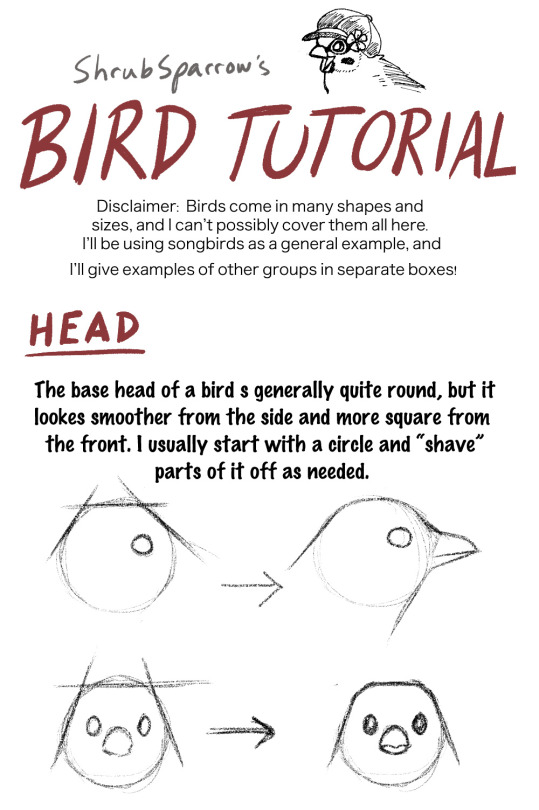
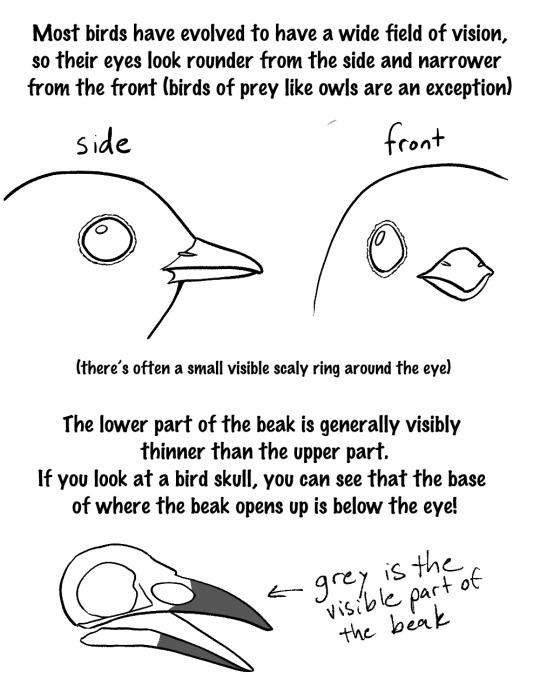
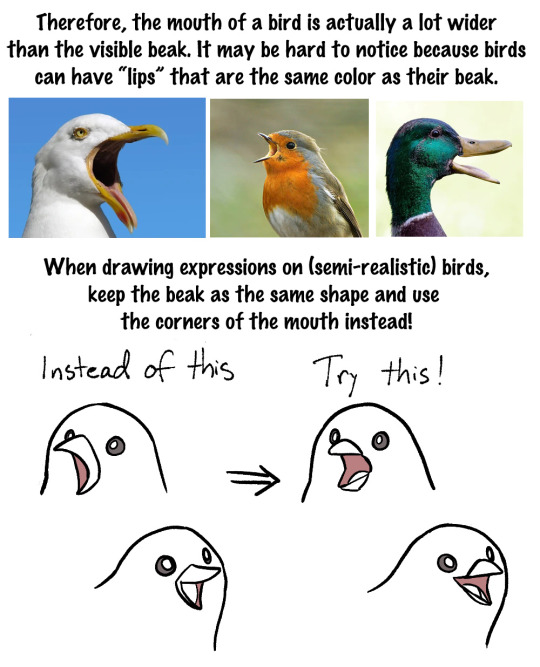
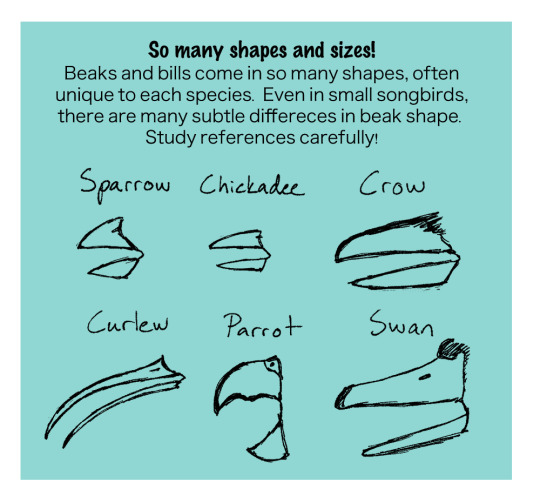
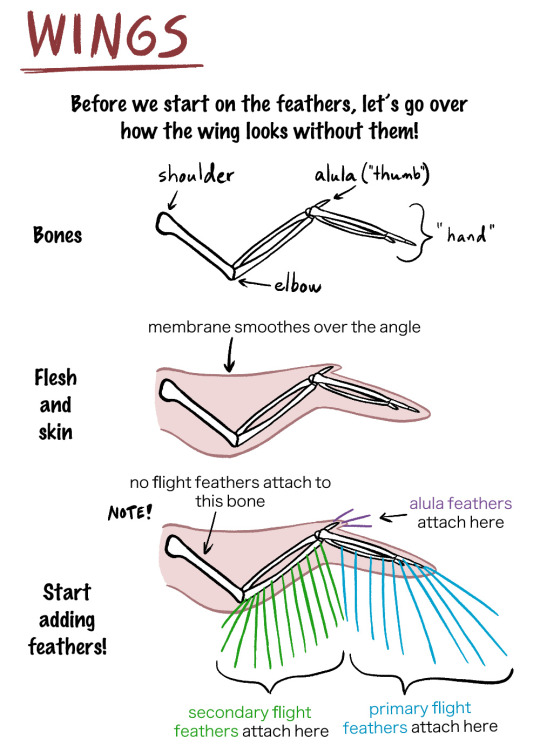
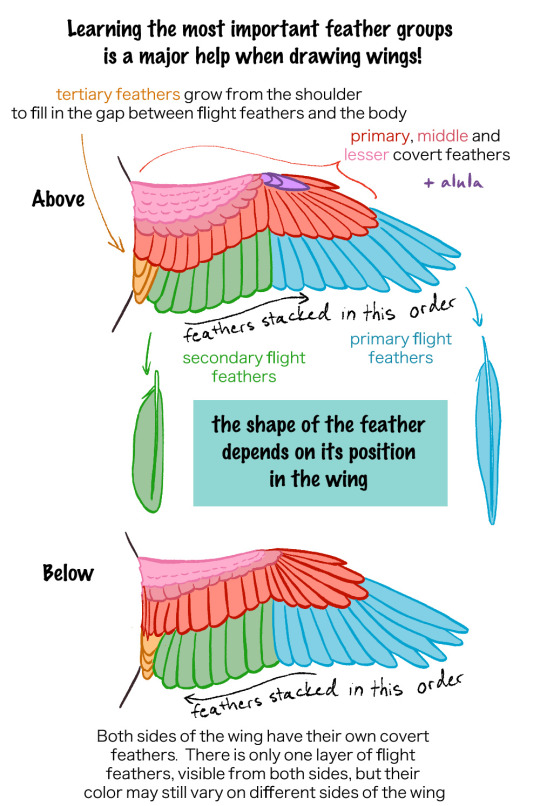
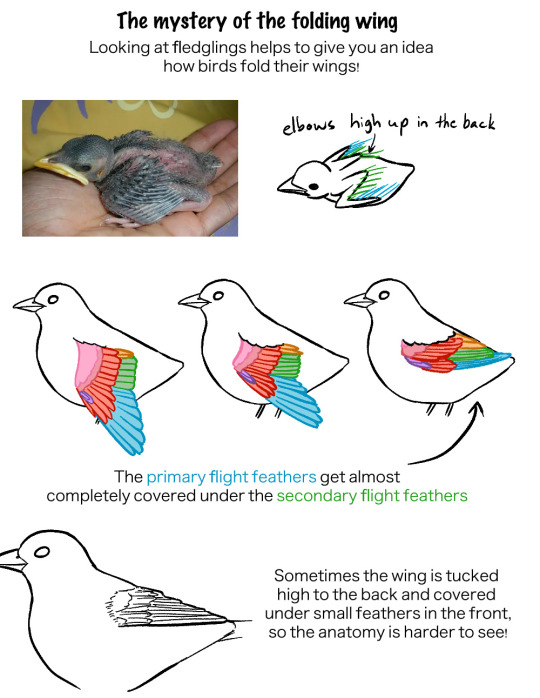
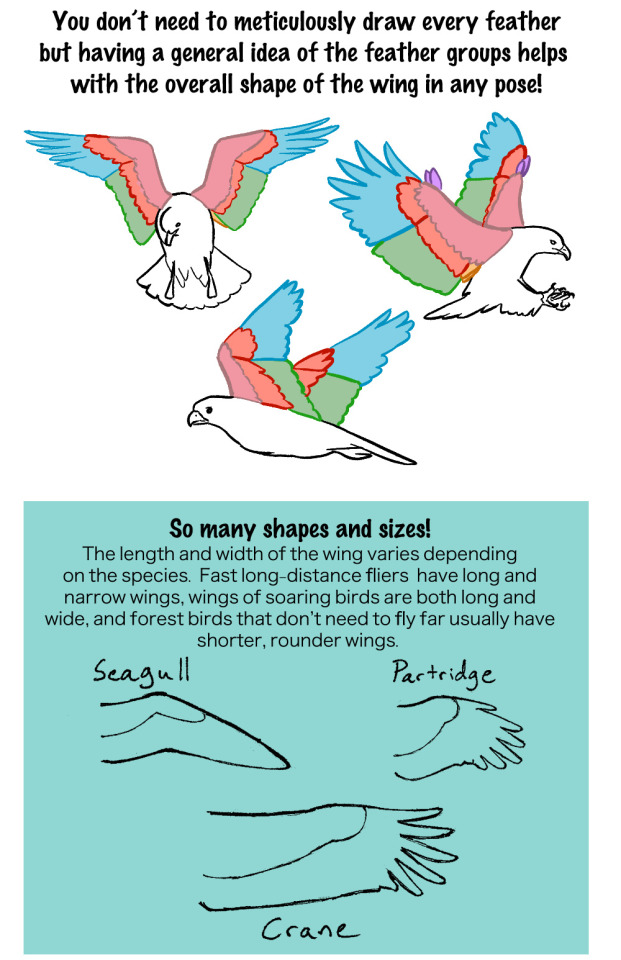
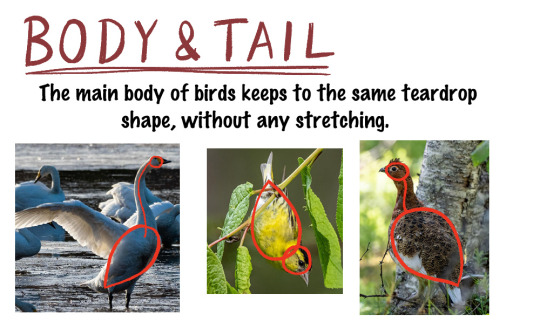
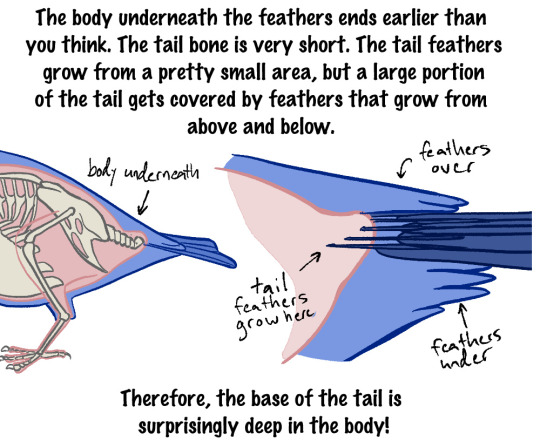
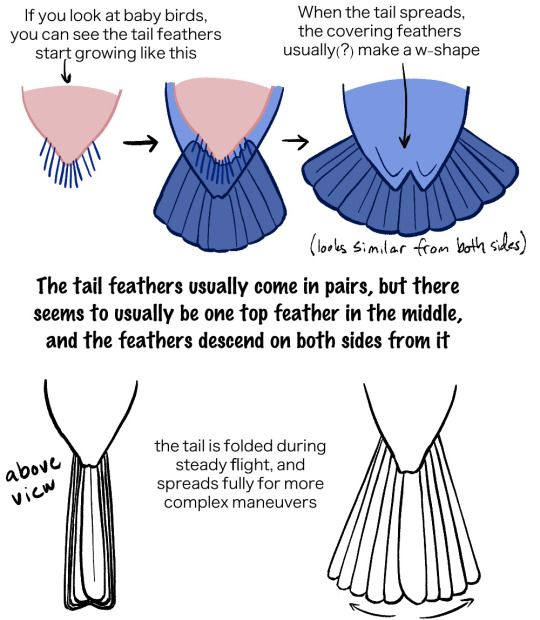
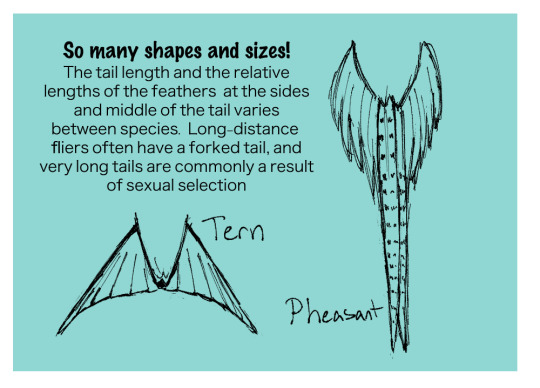

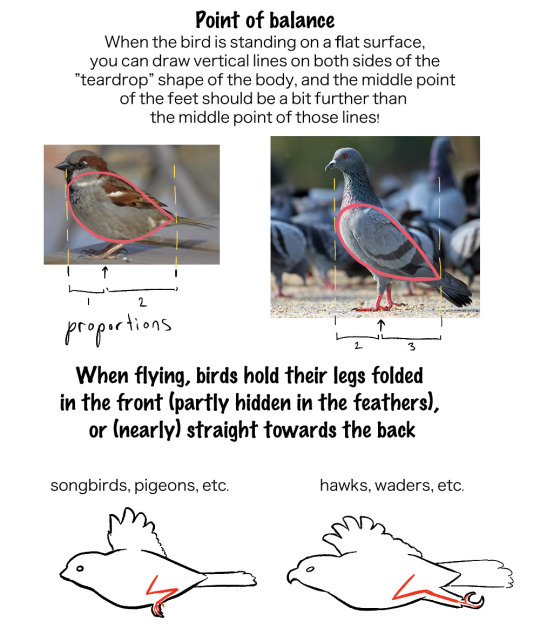
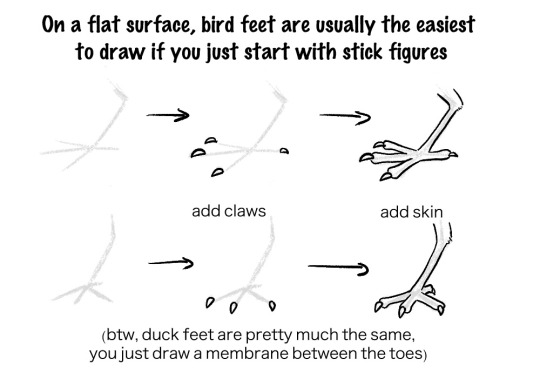
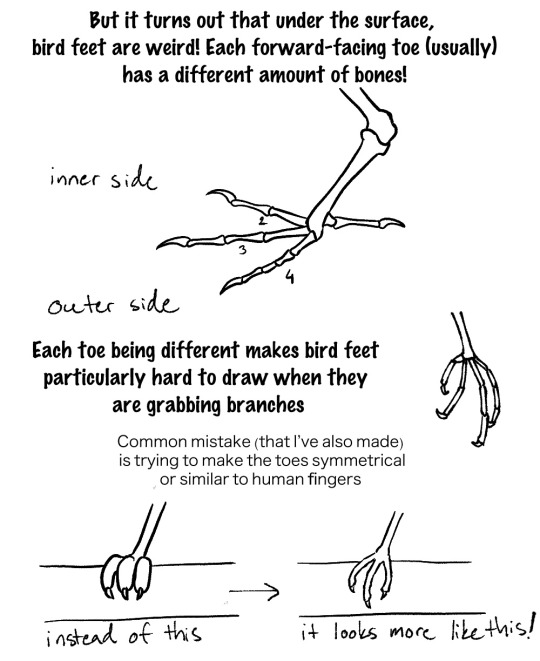
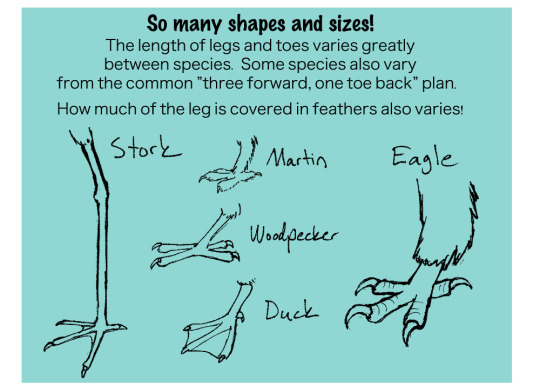
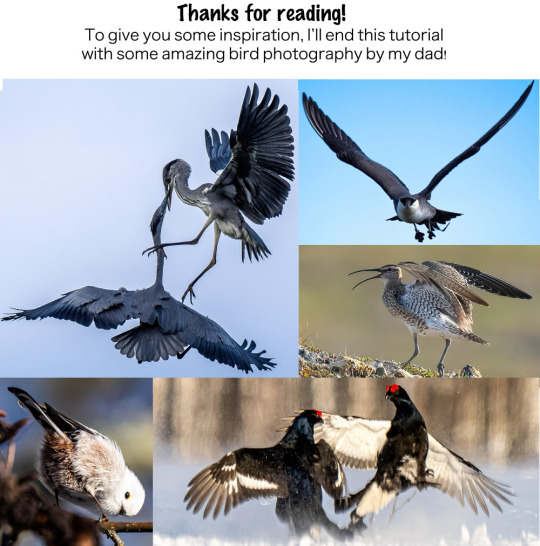
49K notes
·
View notes
Text
so, many of you have probably seen news about one of the first recorded severe case of HPAI (avian flu) in humans.
a lot of you who follow me are birders or inatters or adjacent. hence, a lot of you guys have birdfeeders.
from a rehab worker of almost 3 years: Disinfect your goddamn feeders. not only for HPAI but other diseases, such as avian pox, and for the safety of the birds
and of course, heres how!
now here at rehab we use rescue to disinfect, which is a big ol fancy thing that looks like this
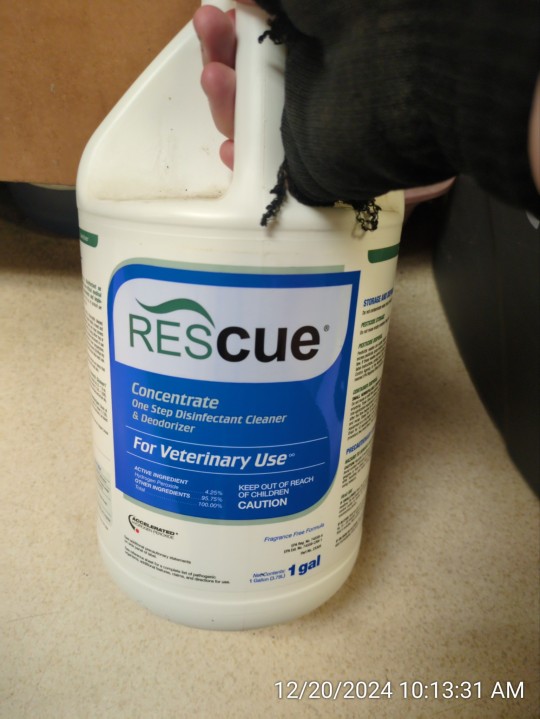
for all our stuff. it's about 1-2tbsp rescue per 32oz water. however, most of you guys cant get a hold of it. so, heres some other things suggested by friends & coworkers that will work just as well
-diluted hydrogen peroxide
-bleach (diluted)
etc. in addition, it's best to use the hottest water you can handle in order to kill off more viruses (our industrial washer does up to 200°F, but whatever you can works just as well.)
the most important thing here is to USE GLOVES!!! PLEASE. pair of gloves to wash it and preferably when youre rinsing it use a DIFFERENT pair of gloves so it doesnt get dirty again.
lastly, if youre seeing visibly uninjured dead birds in your yard, lethargic birds at your feeder, red discolouration or growths on exposed skin, blood on your feeder, or anything else you might deem unusual, take down your feeder. the birds will get food elsewhere i promise, just leave it down for two weeks at least and sterilize it using any of the steps above.
also. please dont hand feed birds. yes even ducks. please please ignore what you see on instagram, it only creates more work for rehabbers. this includes trying to camouflage yourself and feed the birds from your hand when they dont know youre a person. it only hurts you and the birds, and yes this includes hummingbirds. do not try and feed birds off of yourself directly. please. thank you
be safe, clean your feeders, and happy birding!
in addition, below is an approximate of the procedure we use at my work to prevent outbreaks in our residents/patients.
changing aprons between birds, esp for personable birds (assimilated to people, like to fly onto you), switch gloves between birds, between touching hoses, etc. spray or dip + scrape shoes into rescue/accel solution before entering enclosures & or buildings. daily mopping w rescue solution, all dishes are hand washed with soap and hot water, then sent into an industrial washer @ 200°F.
#hpai#bird flu#avian flu#birding#birders#inaturalist#naturalists on tumblr#naturalist#uhh#birds#hawks#im just gonna tag hawk in this#work tag#important#resources
2K notes
·
View notes
Text
Soviet Birds.
The secret facility that I work in has holes in the ceiling. We don't know how to get them fixed.
We tried asking the government to fix it, once. We told them that the holes in the older parts of the facility had gotten large enough to fit birds through, and that birds were getting through, and that, perhaps, a Soviet Spy could fit through as well.
After all, it is well known that Soviet Spies and pigeons are approximately the same diameter.

Our hope was that that this vague and nonsensical threat would put a little fire under Uncle Sam's feet. If the fed couldn't be bothered to give a shit about the giant gaping holes in the roof of our facility, perhaps they could be persuaded to give a shit about... Soviet Spies.
This attempt at manipulation 100% blew up in our faces.
See, the government does not need to be persuaded to give a shit about Soviet Spies. It still wakes up most nights, drenched in cold sweat, terrified and confident that a Soviet Spy is hiding in their nightstand. If it sees a rock on the ground, it flips it over, pistol drawn, ready to shoot the Soviet Spy it fully expects to slither out from underneath. Which is to say: The government is crazy. So when we dropped those two words - inflitration risk - in the repair request, they came in guns-a-blazin'.
Does that mean that they fixed the roof? Of course not. Don't be stupid. No, instead of performing basic maintenance, they installed a state of the art alarm system throughout the facility - lasers, sonar, the works - and told us to always be on the guard. Because of the roof holes.
Then they left.
So now we had an extremely good alarm system... and birds. Which have combined in incredibly obvious and predictable ways to produce an unending fountain of problems.
For Example: About once a month, someone gets called in by the local airforce dispatch because AAAAAAAAAAA a Spy is in the Rad Lab! We're all gonna die! Except every time, it's a bird. And I get why we have to check, but every time, the dispatcher is panicked and the person going out has to be like listen, listen: It's a bird. It's always a bird. It's been a bird every month for the last fifteen years. It will be a bird next month. All this stress? Bad for your heart.
Second Example: Sometimes, birds get in while we're actually working. And when it's in the morning, you know, it's a nuisance, and it stops testing (we are not going to risk irradiating a bird) but it's not an all-hands-on-deck situation because it doesn't take ten hours to get a bird out. But surprisingly often, the bird gets in riiiiight at closing time, and in that situation, everyone goes feral because nobody can leave until the alarm is set, and we cannot set the alarm while the bird is there, because the bird would immediately trigger it and then we'd have to stay another 4 hours to confirm that it was not a Soviet Bird.

So in order to go home, everyone's top priority is Get That Bird. And we have a system for it.
Step 1: The test stands tend to be located in rooms with 30+ foot ceilings. We can't catch birds in places like that - so we have to lure the bird into the relatively low ceilinged (8 feet only) upper offices.
We do this by turning all the lights off in the test rooms, then putting floodlights by the exits. I don't know why this works - some kind of evolutionary brain fragment shared by both Bugs and Birds - but work it does. The birds almost always follow after the lights. From there, it’s just two guys moving the floodlight and a third guy to turn off the lights.
Step 2: Everyone else has been waiting for this step. There is this long stairway up from the basement level into the offices, and in the final stage, the floodlights are brought to the base of the stairwell to bring the bird up. At the top of the steps there will be a group of tennish people, waiting for the signal. The light guys will set up the final transfer, everyone will tense, and then, swish...a bird will flit up the stairs and into the offices.
It's like watching werewolves on a full moon. Before the bird cometh, we are engineers. Nerds. Pale and skinny things, trembling under the fluorescent lights. After the bird, we are beasts. Feral, gnawing things, glowing under the orange sunrise of the 70's halogen floodlights.
And like all beasts, we cannot help but give chase.
Step 3: The were-engineers begin the hunt. The goal at the start is not really to catch the bird - just exhaust it. So the pack simply does not relent. Because the stakes are going home on time, the group is basically given free reign to go anywhere in the building. If someone's door is open, and the bird goes inside, they're going to have to deal with ten sweaty panting maniacs leaping around their office. They don't get to say that they're busy, or remark on how all this movement is a terrible distraction. They are allowed to sit in silence during the chaos, and perhaps thank the war party for chasing the bird while they sat comfortably on their ass. This has been explained several times, and it will continue to be explained until cooperation is achieved.


Anyway.
The chase can go on for quite some time. Sometimes, the bird will get tired and find a crevice to hide in, where it can then be reached through standard cornered-bird catching techniques.

Other times, it will slow down enough that someone can actually yoink it out of the air. But this will go on until someone catches the bird and triggers Step 4.
Step 4: The Finale. This is the get-the-bird-out-of-the-building stage, and it requires someone to adopt a specific role: To Become the Sacrificial Vessel of Bird Removal.
This job is both coveted and feared. It's coveted, because holding a wild bird in one's hands is a precious thing. To feel how small, and fragile, and scared it is, only to free it from the building? That is what it's like to be a benevolent God. But the cost! Oh, the cost. The entire time the Vessel is in motion, the bird will be biting the hell out of their fingers. And I cannot emphasize enough just how painful bird bites are. Their entire face is a set of needle posed pliers, and they know tricks the even the cartels haven't figured out yet. So there's always a little hubbub about who shall be The Vessel while onlookers, stranded outside The Office of Bird Capture, can only look on. Quiet arguments and pleas are heard, little fragments of fear and pride and glory trickling out of room like the silver dust left behind in a bag of well shook quarters. The sound of concensus is silence, and the argument will go on until that's all that's left. And then, from the darkness of the final office, the chosen sacrifice will step forward: Hands gently cupped, tears streaming down their face, fingers trembling from the pain of the ongoing bird chomps.
And this scene is what organizes people. Not leadership, not truly. No one can think and coordinate a crowd while their fingers are being attacked with a combination nutcracker/ear piercer. But the crowd sees the suffering of their annointed, and it is driven to do everything poossible to make the process flow. People instinctively flair out, finding the fastest path outside. Doors are held open. Paths are cleared. Someone, somehow, always knows the way forward and can describe it to the sufferer. Left, left, forward. Corner closet. Yep, there's a hall in there. Forward. Two-hundred more feet man, you're doing great. Just hold it together a little longer. You're killing it.
Then the final door swings open, and the bird flees out into what remains of daylight. And yet, even here, the deed is not yet done. I cannot explain it in words, but the crowd that helped is never content until they can see and speak on the Bird Vessel's wounds. They all have to pull the fingers back and see what was given. Estimate the price: One day to get better - No, three - No, a week! Are you blind? Do you see that blood blister? -Yeah, that's not going away anytime soon - Damn, can you believe how feisty those things are? Like wolves without teeth.
(They cannot help but touch as they go. It has always been this way. Even Thomas was not content until he felt the wounds in Christ's hands.)

Only when the last of the helpers has seen, and commented, and commended, will the engineers scatter. It is their return from the underworld that announces to the sun living surface dwellers that they too can go home. (@somerunner tolja it needed to be a post.)
#DoD work#lab nonsense#soviet birds#i really like being the bird guy if you cant tell#i just like birds in general#i think this was an essay?#dont really know how to cover the ending for this thing#one part explanation of insane government inefficiency#one part explanation of the kind of joyful humanity that only *comes* from interacting with hilariously inefficient systems#like a full on defense of the beauty that only comes from poor uses of resources#and one part poetic exploration of the sacrificial hero archetype as a bird catcher#i spent so much fuckin time make this guys you have no idea#maximum effort post#effort post
2K notes
·
View notes
Text
How does one identify birds based on their flight patterns?
Bird identification can be challenging, but one of the best ways to recognize a bird is by observing its flight pattern. A bird’s flight can reveal its size, shape, and behavior, making it a useful tool for birdwatchers. By understanding the basic types of bird flight patterns and their associated characteristics, birders can easily identify many species in the field. In this article, we will…
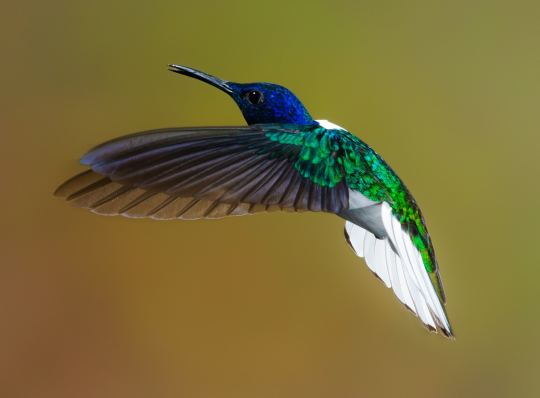
View On WordPress
#avian diversity#behavior#bird behavior#bird identification#birding resources#birdwatching#body size#field guides#flight patterns#Identifying birds#observation#patience#wing shape
1 note
·
View note
Text
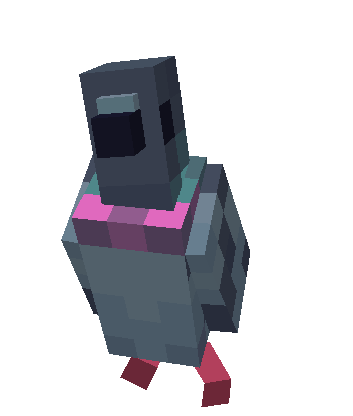

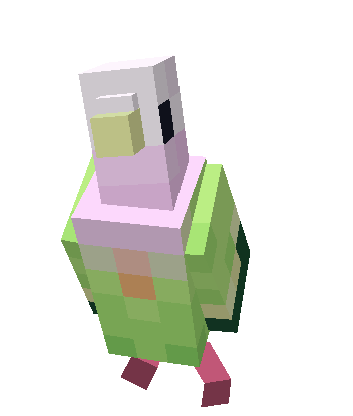


parrots Pigeons :D
#minecraft#mineblr#minecraft parrot#birds#texture pack#resource pack#blockbench#blockbench art#minecraft art#minecraft mobs#pigeon#dove#dont ask why i turned the parrots into pigeons#because im telling you anyway#i like pigeons#very underrated birds#banicraft texture pack
15K notes
·
View notes
Text









Pigeon Favicons I made!
.
F2U. No need of creeds. Recolors allowed!
#favicon#favicons#blinkies#pixel gif#web graphics#rentry decor#rentry resources#rentry graphics#artists on tumblr#gray#pigeon#f2u#animal#bird#seed
388 notes
·
View notes
Text
Hi bird therians! I'd like to present the following list of definitions of avian terminology; instincts and anatomy. Specifically, terms for things that many birdkin may already be aware of due to their own shifts, but not know the word for or even that it's a real and normal thing. Why do I make that assumption? Because my own mind was blown every time I discovered one of these words, the way things I would do or phantom parts I would feel suddenly made sense. So I hope to induce the same reaction in at least someone.
Behaviors
Mantling is mostly a bird of prey thing, the action of leaning over a kill and shielding the spoils with your wings so as to defend it from thieves. I can do no better of a description than a photo, included at the bottom of this post and for raptors it will probably spark recognition.
Rousing is the word for that "slowly fluff up the feathers and then shake the whole body" thing that birds do. Yes, it does have a name! Birds do it when relaxed or just chilly. It is not a threat display. I experience this as like an near-involuntary action -- like scratching an itch or sneezing -- and because I'm not actually raising physical feathers it feels kind of like shivering. But it sort of feels frustrating that I can't seem to achieve it. Like when a sneeze goes away.
Feather-plucking (pterotillomania) is a maladaptive habit birds in captivity develop when they are stressed. You see it most often with parrots, because they're kept as pets more than other birds and are also extremely intelligent so more easily understimulated. Sometimes this does feel like being a bird in captivity and a lot of you might experience this instinct without knowing what it is your brain's asking to do because you have no feathers. Calling it pterotillomania is helpful to me because I have actual dermotillomania and if my body had feathers I'd be plucking them.
Anatomy
Nictitating membrane. Starting with this because you may already know it by now. The third eyelid of birds, translucent, drawn sideways across the eye so that you can keep it moist while still being able to see. Also, as you may know, relevant to cat therians!
Crop. Part of the digestive tract of a bird in the throat where food is temporarily stored before being digested. If you had these shifts it would feel like, according to Wikipedia, basically an enlarged portion of the esophagus.
Keel. An extension of the sternum, the structure to which flight muscles are attached. If you had these shifts it would feel like a thin bone going beneath (or I guess on a humanoid body plan, in front of) your ribcage.
Cloaca. In the interest of not having to mark this post mature, I will not define or describe this one. I encourage you to look it up. Mammals are already working to reduce the stigma surrounding these types of shifts and instincts; we can do the same. There is no shame in it. You're a bird and birds have these. Accept it.
Birds do have sensation in our beaks. There are nerve endings in the beak. Not as much as, say, human skin, but yes, birds can feel touch on their beaks. If you can feel your beak, great! That is anatomically correct, and it certainly does not make you fake!
And now for your enjoyment, a mantling eagle:

635 notes
·
View notes
Text
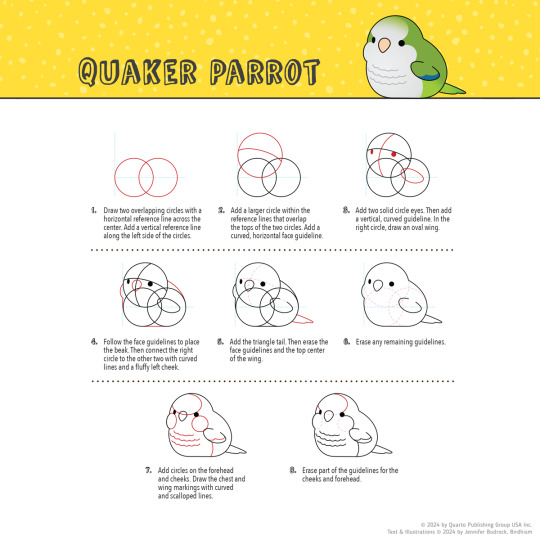
#how to draw#tutorial#art resources#quaker parrot#cute#kawaii#birds#lovebird#animals#bird#parrots#parrot#birblr#birb#art#illustration#cuteness#cute animals#cute bird#cute art#adorable#cute things#parakeet#bird art#artwork#drawings
698 notes
·
View notes
Text
Writing Notes: Birds
Birds are warm-blooded vertebrates. Their bodies are covered with feathers, they lay eggs, and most birds are able to fly.

Wing Shape
The shape of a bird’s wings is related to how it flies.
Long, narrow wings are ideal for gliding, while broader wings help a bird soar on rising air currents.
Short, rounded wings provide power for a quick takeoff.

Flying Patterns
Birds have different ways of using their wings.
Some beat them at a steady rate, either fast or slow.
Many other birds use a combination of flapping and gliding, and some barely flap their wings at all.
Fast flapping. Ducks have small wings compared to their heavy bodies, so they use rapid, regular wingbeats:

Slow flapping. Many birds with relatively big wings, such as seagulls, fly with slow, leisurely wingbeats.

Intermittent flapping. Woodpeckers use regular bursts of flapping, which they alternate with brief, swooping glides:

Random flapping. A swallow seems to use a random combination of flapping and gliding as it hunts airborne insects:

Source ⚜ Writing Notes & References More References: Worldbuilding ⚜ Plot ⚜ Character
#writing reference#birds#writeblr#dark academia#animals#spilled ink#writing prompt#literature#writers on tumblr#poets on tumblr#poetry#creative writing#fiction#writing inspiration#nature#writing ideas#light academia#writing resources
174 notes
·
View notes
Text






i need to collect all of these
422 notes
·
View notes
Note
duck pixels? If ya have any!!














QUACK QUACK !!! ₊ ˚ ⊹ ♡
#favicons ⊹#favicons#pixel art#dividers#web graphics#pixels#cute pixels#decome#carrd material#web resources#old web graphics#carrd resources#ducks#duck favicon#birds#bird favicons#emotes#rentry#rentry pixels#rentry gif#rentry decor#rentry graphics#rentry resources#carrd#carrd graphics#carrd stuff#pixel#pixel graphics#pixel animation#pixel aesthetic
243 notes
·
View notes
Text
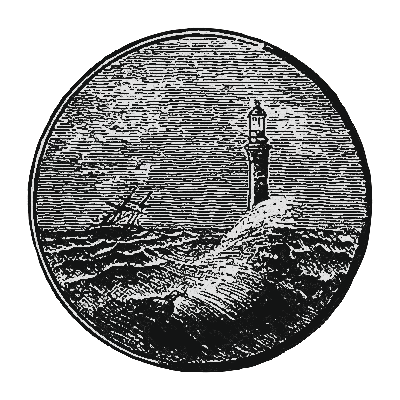
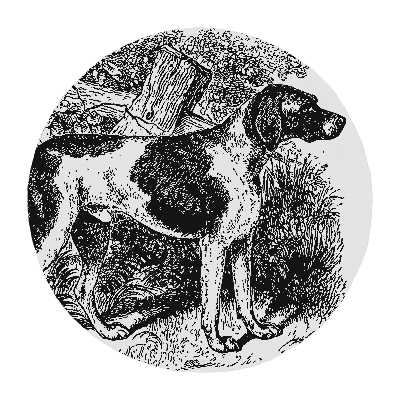

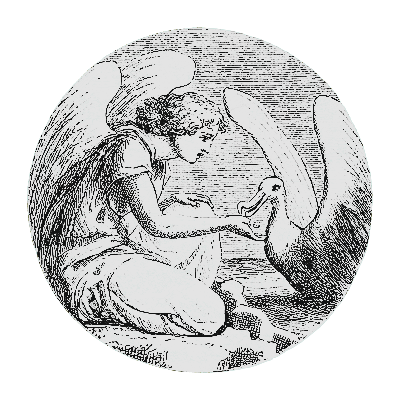
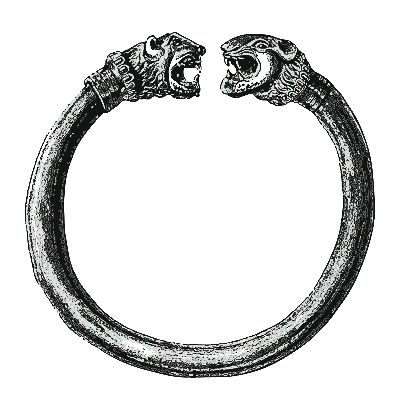

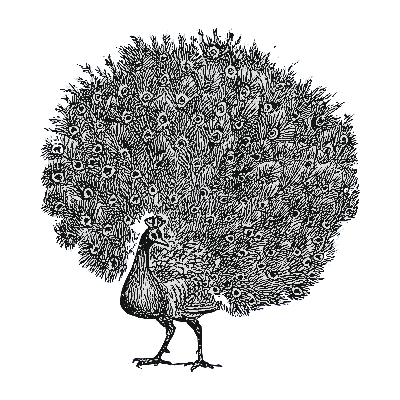


Medallion
credit: suskind
#icons rpg#icon#ressources rpg#rpg resources#roleplay#profil rpg#stock#vintage#engraved#png#transparent png#skull#peacock#earth#world map#compass#lighthouse#dog#angel#bird#bracelet#black and white
282 notes
·
View notes





